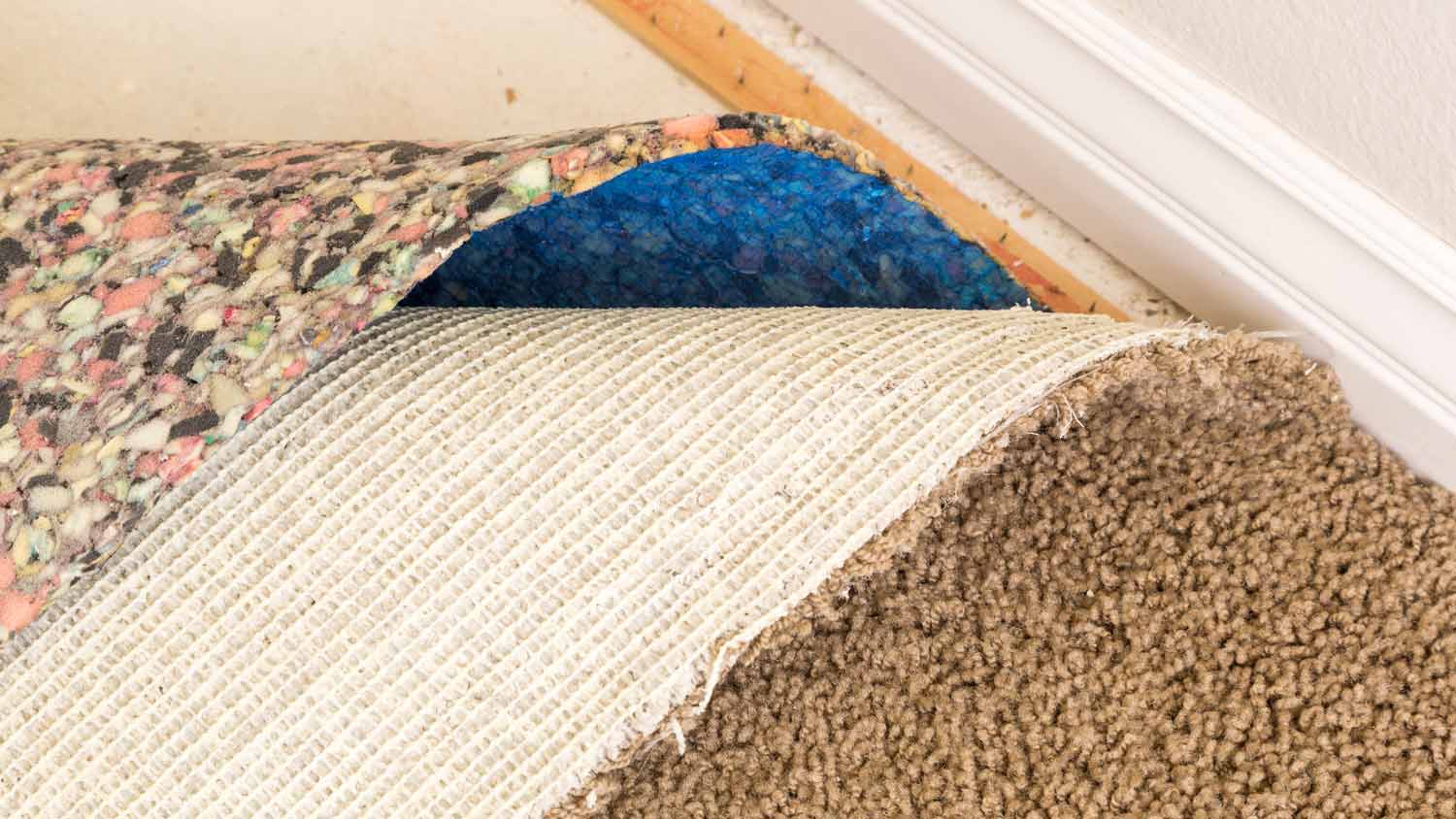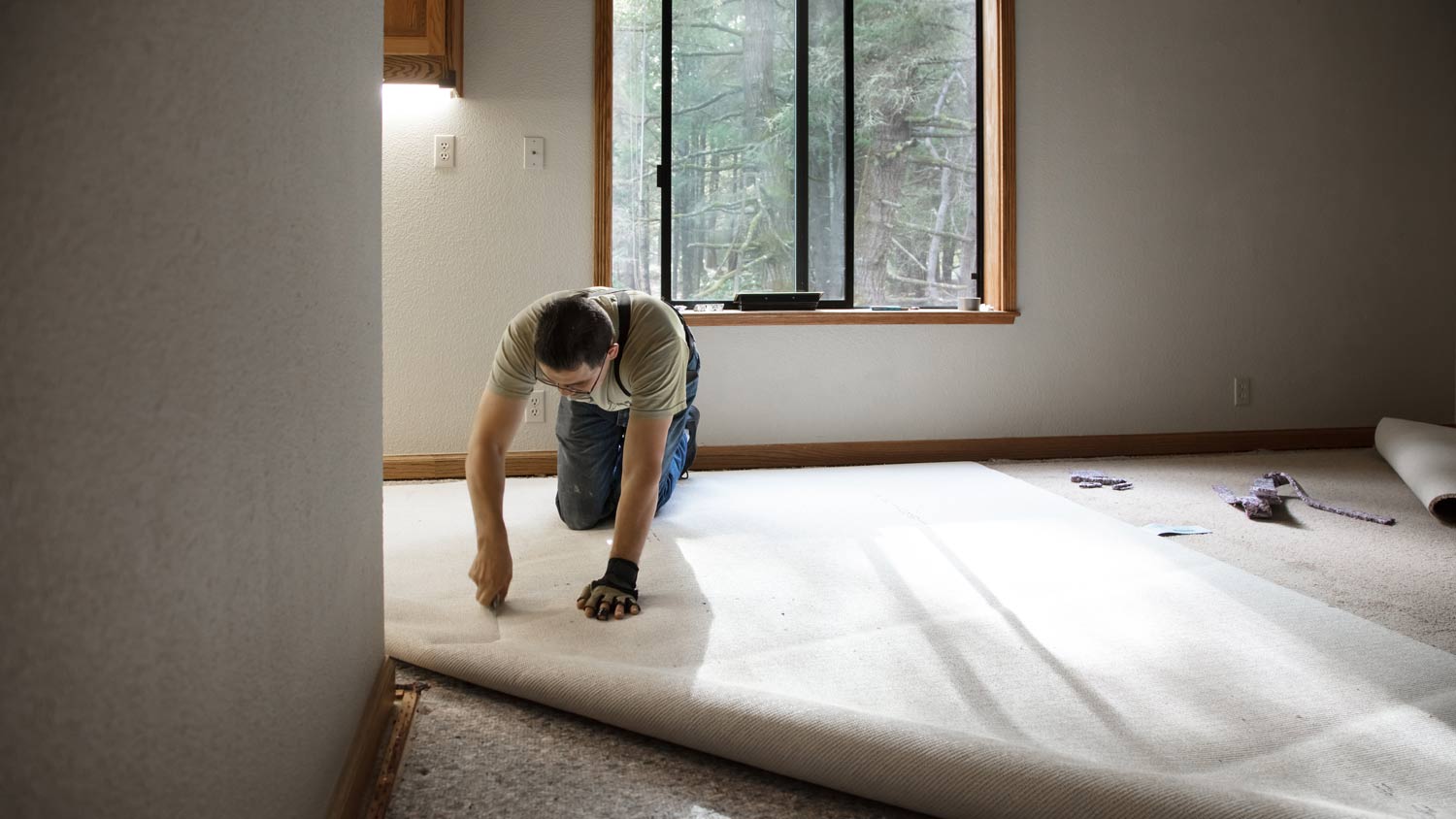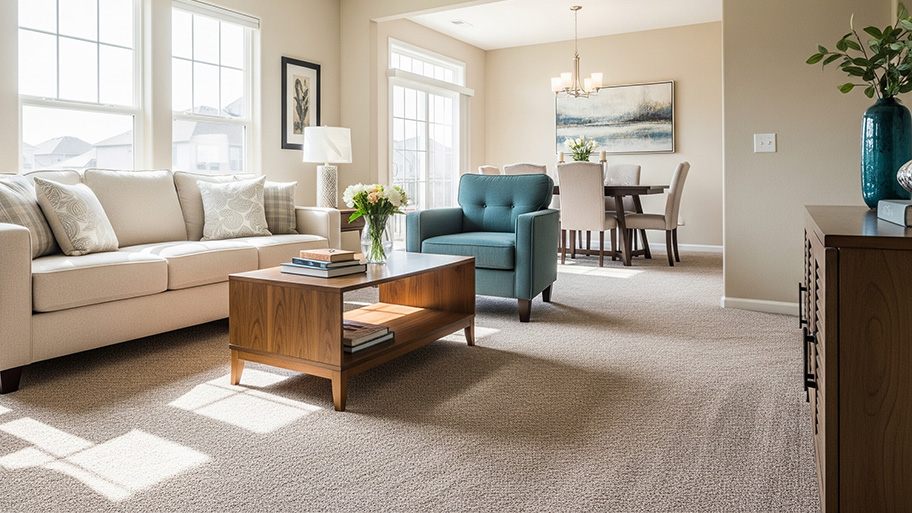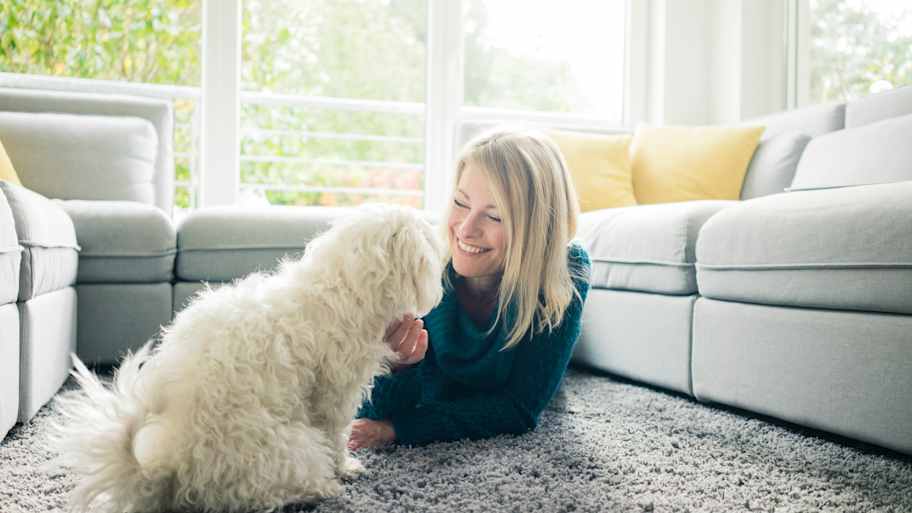
The cost to carpet stairs depends on the number of stairs, material choice, and staircase type. Read on to calculate your project expenses
A must-have for pet messes, basement leaks, and juice box blowouts


Blocks liquids from penetrating carpet padding and subfloors.
Important in homes with pets and kids or finished basements.
Not effective against flooding or widespread water penetration.
It can feel firmer underfoot than standard padding.
Needs to be installed meticulously to avoid moisture entrapment.
Your dog has an accident. Your toddler spills juice. With moisture barrier carpet padding, those accidents don't have to mean permanent damage. This guide explains when this purchase is a good idea and why installation is more crucial than you know.
Moisture barrier carpet padding appears identical to regular padding, but with one key difference: it’s coated with a waterproof finish. This layer is made of plastic film, rubber, or treated foam that prevents liquid from passing through, instead of absorbing it. Think of it like a spill shield for your subfloor and carpet. Most moisture barrier carpet padding is typically used in conjunction with synthetic carpets and works well in high-traffic areas.
Regular carpet padding absorbs liquid like a sponge. In contrast, moisture barrier padding works in the opposite way—it forms a tight-knit layer that keeps moisture on the surface. This feature gives you time to blot spills before they seep into the subfloor or padding core. In homes with pets or children, that extra layer can be a lifesaver.
Ventilated barrier pads allow a small amount of air to pass through, preventing moisture from becoming trapped. However, other carpet pads will trap moisture if poorly installed or used in the wrong conditions, such as under natural fiber carpets that require ventilation.

If you have a busy home that is full of kids, pets, or both, then moisture barrier padding can be a lifesaver. One of the most significant benefits of this type of padding is that it keeps spills and accidents from soaking into the padding or damaging the subfloor beneath, saving you from expensive carpet replacement costs.
The protection doesn't stop at the surface, however. This padding also blocks mold and mildew by preventing dampness from reaching the floor, especially in humid environments.
Although it offers numerous benefits, moisture barrier padding is not perfect and may not be the ideal solution for all rooms. Carpet padding costs are often higher than regular padding, ranging from $0.75 to $1.50 per square foot, while standard padding costs between $0.25 and $0.90. In low-risk areas, such as upstairs bedrooms or guest bedrooms, the upgrade may not be worth the extra cost.
You also need to consider installation. If the padding isn’t sealed correctly or gaps are left near seams or edges, moisture can still sneak in, sometimes making the problem worse.
So, is moisture barrier carpet padding worth it? In most residences, yes, especially if you have kids, pets, or areas prone to moisture. The barrier coating repels spills and prevents them from reaching your subfloor, thereby avoiding long-term damage. That'll save you from having to spend money on future repair work or replacement flooring. However, not every room may need this protection. If you're carpeting a dry, upstairs guest room that's not used often, you can probably forgo the extra cost.

DIY kits are available and doable for small rooms, especially if you’re handy and the subfloor is flat and clean. You’ll need to follow the steps to install carpet padding carefully, as gaps or loose seams can compromise the barrier effect.
For large rooms or high-risk areas, professional carpet installation near you is typically the best option. A professional provides tight seams, total coverage, and the correct pad for your carpet type. It costs more upfront, but it gives longer-lasting moisture protection and peace of mind.
Use it in areas that are prone to—you guessed it—moisture. It's ideal in finished basements, laundry rooms, pet areas, playrooms, and anywhere spills or humidity are a daily reality. It's convenient over concrete subfloors, which will pull up moisture from below.
Skip it in low-risk zones, such as upstairs bedrooms or under natural fiber carpets such as wool, which need to breathe. Even an excellent barrier can cause problems if used in the wrong environment. If you're in doubt, consult a carpet specialist and consider both your home's needs and your flooring dreams.
From average costs to expert advice, get all the answers you need to get your job done.

The cost to carpet stairs depends on the number of stairs, material choice, and staircase type. Read on to calculate your project expenses

Carpet padding makes your carpet feel extra comfortable and protects your floors from damage, but how much does carpet padding cost? Let’s look at the numbers.

Carpet installation costs vary depending on the type of carpet, difficulty of the installation, and labor costs. We break it all down in this article.

Will carpet installers move furniture? Here’s what you need to know and how you can prepare your space before your carpet project.

Pop quiz: paint or carpet first? While there’s no “right” answer, both approaches have unique benefits—and drawbacks—to consider. Here’s what you need to know.

Frieze carpet is a trendy option, but is it right for your home? Consider these pros and cons of frieze carpet to help you decide.